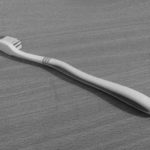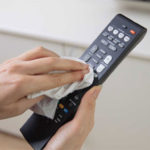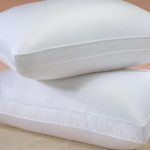Face towels, toothbrushes, wipes, dishes, and everyday household items that we come into contact with our skin, mouth, and body every day… can all be sources of infection. Here are 7 items that harbor disease-causing bacteria that we need to be careful with when using.
1. Dish towels
Replacement frequency: 1-2 weeks.
Dish towels are excellent breeding grounds for bacteria, with astonishing amounts. According to international studies, the total number of bacteria in a used dish towel can reach up to 500 billion. These towels also carry E. coli and Staphylococcus aureus – both potential disease-causing bacteria.

In addition to dish towels, kitchen wipes also pose significant hygiene risks. At the annual meeting of the American Society for Microbiology, researchers analyzed 100 used kitchen wipes and found that 49 of them were contaminated with bacteria. Among the 49 wipes, 36% were found to contain Coliform bacteria in feces; 36% contained Enterococcus bacteria, which cannot be effectively washed off with hand sanitizers; and 14% contained Staphylococcus aureus.
To minimize the harm caused by bacteria to the human body, towels should be changed every 1-2 weeks, and it is best to wash the towels with hot water and dry them in the sun to reduce the growth of bacteria.
2. Bamboo chopsticks
Replacement frequency: approximately 6 months.
Each time we use and clean chopsticks, we may create cracks and grooves on them, which can become breeding grounds for bacteria, especially if the chopsticks are not dried promptly after washing. Any remaining water will provide an ideal environment for the reproduction of microorganisms.
The lifespan of bamboo and wooden chopsticks is about six months. It is best to sterilize the chopsticks once a week. After cleaning, boil the chopsticks in boiling water for 10-15 minutes or microwave them for 2-3 minutes to sterilize.

3. Wooden cutting board
Replacement frequency: approximately 12 months.
In a 2012 study, samples of cutting boards were collected from 300 households’ kitchens, and it was discovered that 41% of the households were contaminated with E. coli bacteria on the cutting boards, with 14% of them being seriously contaminated.
The study also investigated the relationship between cutting board contamination and diarrheal diseases. Generally, the more severe the Coliform contamination, the higher the incidence of diarrhea.

A cutting board is an essential tool in every kitchen, but many people only have one board at home, which increases the risk of cross-contamination between raw and cooked foods and makes bacterial contamination more severe. Cutting boards with knife marks are also more likely to harbor bacteria.
The cutting board should be replaced once a year, and if it has mold or too many knife marks, it should be disposed of and not reused. It is also important to be mindful when using a cutting board, cutting raw and cooked foods separately, buying additional backup cutting boards, and regularly sanitizing them.
In addition, remember to separate raw and cooked food when using knives.
4. Face towels and bath towels
Replacement frequency: 3 months.
In a survey of 167 bath towels that were tested for bacteria, the results showed that most bath towels contained bacteria such as Staphylococcus aureus, Candida albicans, and Escherichia coli. Cotton fibers, the main component of bath towels, have a tubular structure with hollow cells that can retain moisture, which is the most important condition for bacterial survival.

Therefore, it is best to replace towels every 3 months.
5. Toothbrush
Replacement frequency: ideally every month.
American dentists have found through bacterial culturing that whether it’s a patient’s toothbrush or a healthy individual’s, if it has been used for a month, it will have a large amount of Candida albicans, Streptococcus spp, pneumonia, and Staphylococcus aureus.
Patient’s toothbrushes have hundreds of millions of bacteria after 1 week of use. They point out that an unclean toothbrush is a source of many diseases. Because these bacteria can enter the human body through direct swallowing or damaged oral mucosa and deep-seated teeth, causing diseases such as encephalitis, sepsis, endocarditis, and nephritis.

After using a toothbrush, it should be thoroughly rinsed, dried, kept dry, placed upside down in a cup, and stored in a dry, well-ventilated place to control bacterial growth. Soaking the toothbrush in vinegar, alkaline water, or saltwater for more than 4 hours can prevent the development and reproduction of bacteria in the bristles and prevent various oral and infectious diseases.
The total “working time” of each toothbrush should not exceed 6 hours, measured by brushing twice a day, 2 minutes each time. The toothbrush’s lifespan is about 3 months. It is best to replace it once a month and no later than 3 months, as it will become heavily contaminated with bacteria.
6. Underwear
Replacement frequency: 3-6 months.
Studies have shown that if underwear is not washed within a day, it will retain about 0.1g of waste, which may contain insect eggs, bacteria, and viruses. The number of bacteria can even reach 100,000. If dirty underwear is replaced with clean underwear, it will definitely become a breeding ground for germs.
Therefore, it is best not to wash underwear overnight to avoid creating opportunities for bacterial growth. Underwear should not be changed every few days, especially in hot summers and humid rainy seasons. It is essential to replace, wash, and sterilize underwear effectively.

In general, after about 3 months of regular use, cleaning, and drying, the plant fibers of cotton underwear will age and harden, leading to reduced comfort when worn. At this point, it is advisable to replace them. Underwear made of other materials such as nylon and modal should not be used for more than 6 months.
7. Pillows
Replacement frequency: about 12 months.
Pillowcases are prone to sweat, saliva, dandruff, and dust. After prolonged use, pillows cannot avoid the infection of various bacteria.
Pillows should be cleaned and replaced every half month or every month, and it is best not to use the same pillow for more than a year.

According to Trí Thức Trẻ
8 Common Mistakes People Make with Cutting Boards
Are you using your cutting board correctly? Many Vietnamese households rely on cutting boards in their kitchen, but not everyone knows how to use them properly, especially when it comes to wooden cutting boards. Check out these 8 mistakes to avoid when using a cutting board to ensure both hygiene and safety for everyone in your family.



































